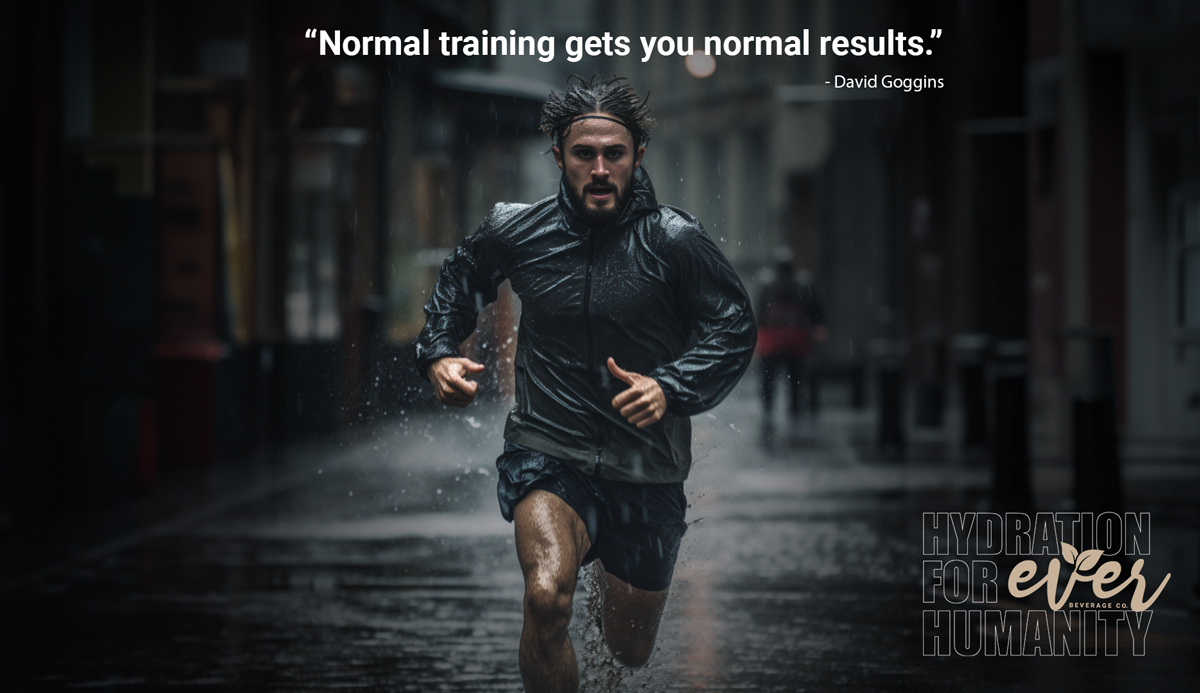
Having a ‘champion mindset’ is often talked about in sports – it can be the thing that separates extreme winners from average players. Michael Jordan and Kobe Bryant are two good examples of this. Their work ethic, competitiveness, and determination are that of legend. You don’t have to be at the top of your sport to embrace a champion mindset or have the same mental toughness as professional athletes to reach your goals.
Endurance athletes push their bodies to its limits – this is where mental resilience stands as the unsung hero. The ability to navigate discomfort, setbacks, and the unpredictable nature of races demands a unique set of mental skills.
This guide delves into the strategies employed by endurance athletes – the ultimate leaders in mental toughness – to cultivate and sustain mental resilience. Whether you’re an athlete seeking an extra edge or an individual striving for greater mental fortitude, the lessons from these endurance warriors are both enlightening and empowering.
The Mindset of Endurance Athletes
Embracing Discomfort: The Path to Mental Toughness
Ever wonder what drives endurance athletes to push themselves to the brink of physical and mental exhaustion? It’s all about embracing discomfort. Unlike your average gym-goer who shies away from pain and discomfort, endurance athletes willingly dive headfirst into the fire, knowing that it’s the only path to greatness.
Picture this: You’re halfway through a grueling marathon, your legs feel like lead, and every step is a battle against your screaming muscles. Sounds like torture, right? Not for endurance athletes. They thrive in these moments of adversity, using them as opportunities to build mental toughness and resilience.
Take ultra-runner Dean Karnazes, for example. Known for running 50 marathons in 50 consecutive days, Dean is the epitome of mental fortitude. He once said, “Run when you can, walk if you have to, crawl if you must; just never give up.” That’s the mindset of a true endurance athlete – embracing discomfort and refusing to back down, no matter how tough the going gets.
"Run when you can, walk if you have to, crawl if you must; just never give up."
Dean Karnazes
Goal Setting and Long-Term Vision
Another hallmark of the endurance athlete mindset is setting goals and having a vision. These athletes aren’t just in it for the short-term gains – they have their sights set on big, audacious goals that drive their every move.
Setting challenging but achievable goals is essential for building mental resilience. Whether it’s completing an Ironman triathlon, summiting Mount Everest, or running a sub-3-hour marathon, endurance athletes know the power of setting the bar high. These goals serve as beacons of light on the darkest of days, guiding them through the inevitable highs and lows of training and competition.
But it’s not just about the immediate goal – endurance athletes often have long-term visions that extend far beyond the finish line. They understand that success isn’t measured in single races or events but in the journey as a whole. By keeping their eyes firmly fixed on the horizon, they’re able to stay focused and motivated, even when the going gets tough.
Take ultramarathon champion Scott Jurek, for instance. He didn’t just set out to win races – he aimed to redefine the limits of human endurance. His long-term vision of pushing the boundaries of what’s possible fueled his training and racing for years, culminating in record-breaking performances and legendary feats of endurance.

Mindfulness and Focus: Harnessing the Power of Presence
In the chaotic whirlwind of an endurance event, where every muscle screams for respite and every breath is a battle, one thing sets elite athletes apart – mindfulness. These masters of mental resilience have honed the art of staying present in the moment, even amidst the chaos of competition.
But what exactly is mindfulness, and how do endurance athletes use it to their advantage? Mindfulness is simply the practice of bringing one’s attention to the present moment, without judgment or distraction. For endurance athletes, this means staying fully engaged in the task at hand – whether it’s navigating a technical trail, maintaining pace in a long-distance race, or pushing through the final miles of a grueling event.
Take ultra-runner Kilian Jornet, for example. Known for his otherworldly feats of endurance, Kilian relies on mindfulness techniques to stay focused and present during his epic mountain adventures. Whether he’s traversing treacherous ridgelines or navigating icy glaciers, Kilian remains fully immersed in the present moment, attuned to every step and breath.

When doubt lurks around every corner and pain is an ever-present companion, positive self-talk becomes a lifeline. Endurance athletes understand the power of words to shape their reality, and they use them to build mental resilience and overcome adversity.
Positive self-talk involves replacing negative thoughts and beliefs with positive affirmations and mental cues. Instead of succumbing to self-doubt or negativity, athletes consciously choose to reframe their inner dialogue in a more empowering light.
For example, during a grueling uphill climb, an endurance athlete might repeat the mantra, “I am strong, I am capable, I am unstoppable.” Or, when faced with doubt during a race, they might remind themselves, “I’ve trained for this, I’ve prepared for this, I’ve got this.”
Legendary cyclist Lance Armstrong famously used positive self-talk to propel himself to victory in the face of seemingly insurmountable odds. During his historic Tour de France wins, Armstrong would repeat the mantra, “Pain is temporary, quitting lasts forever,” reminding himself that temporary discomfort paled in comparison to the glory of victory.
Adapting to Unpredictability: The Art of Flexibility
Mother Nature always reigns supreme, and even the best-laid plans can go awry. That’s why adaptability is key. Endurance athletes understand that no race or training session unfolds exactly as expected, and they embrace the uncertainty with open arms.
But how do these athletes navigate unexpected challenges with such ease? It all comes down to flexibility – both mental and physical. Instead of resisting change or dwelling on setbacks, endurance athletes embrace the moment and adapt their strategies on the fly.
Imagine you’re halfway through a long trail run when a sudden thunderstorm rolls in, drenching the course and turning the trails into a muddy mess. Instead of throwing in the towel, you adjust your pace, shift your footing, and power through the elements with a smile on your face. That’s the resilience of an endurance athlete in action.
Take trail runner Courtney Dauwalter, for example. Known for her fearless approach to ultra-running, Courtney has faced her fair share of unexpected challenges on the trails. From brutal weather conditions to unforeseen course changes, she approaches each obstacle with a calm, adaptable mindset, refusing to let anything derail her quest for greatness.
Learning from Failure: Turning Setbacks into Strengths
In endurance sports, failure isn’t seen as a roadblock – it’s viewed as a valuable learning opportunity. Endurance athletes understand that setbacks are simply part of the journey, and they use each experience, whether positive or negative, to grow stronger and become better athletes.
But how do these athletes turn setbacks into strengths? It all comes down to perspective. Instead of dwelling on their mistakes or setbacks, endurance athletes approach them with curiosity and a growth mindset, asking themselves, “What can I learn from this? How can I improve?”
Legendary triathlete Chrissie Wellington is a shining example of resilience in the face of adversity. Despite facing numerous setbacks and challenges throughout her career, including injuries and setbacks during races, Chrissie never lost sight of her ultimate goal. Instead of letting failure define her, she used it as fuel to drive her forward, ultimately becoming one of the most decorated triathletes in history.
Conquering the Endurance of the Mind
True strength isn’t just measured in miles or medals, but in the resilience of the human spirit. From embracing discomfort and setting audacious goals to harnessing the power of mindfulness and positive self-talk, endurance athletes embody the epitome of mental toughness and unwavering determination.
But perhaps most inspiring of all is their ability to rise strong in the face of setbacks. Whether navigating unexpected challenges or learning from failure, these athletes show us that setbacks are not roadblocks, but stepping stones to success. With adaptability, flexibility, and a growth mindset, they turn adversity into opportunity and emerge stronger, wiser, and more determined than ever before.
So, the next time you find yourself facing a daunting challenge or staring down the road less traveled, remember the lessons of the endurance athlete. Embrace discomfort, set your sights high, stay present in the moment, and never lose sight of your ultimate vision. And when setbacks inevitably arise, as they always do, embrace them with open arms, knowing that they hold the keys to your greatest triumphs.
In the end, it’s not just about crossing the finish line – it’s about the journey along the way, and the strength, resilience, and unwavering determination that carry us through. So lace up your shoes, chart your course, and embark on your own journey of endurance – for the truest victories are won not on the racecourse, but in the endurance of the mind.




